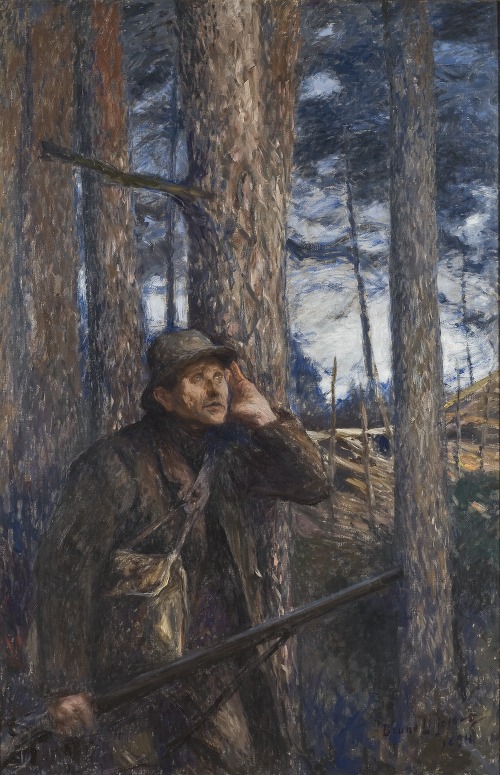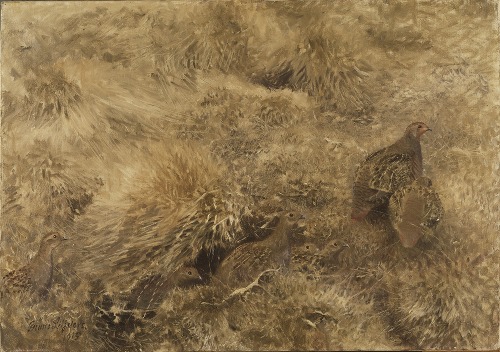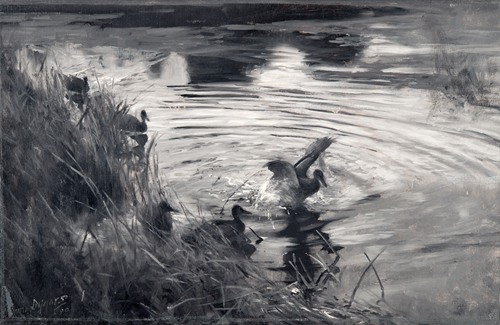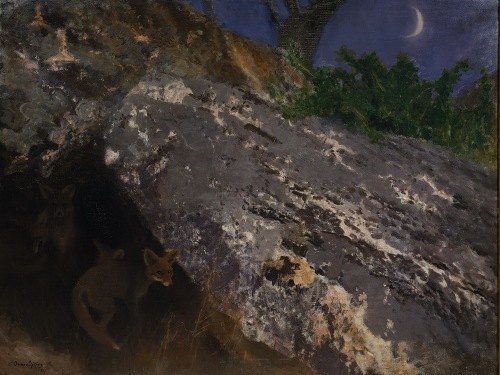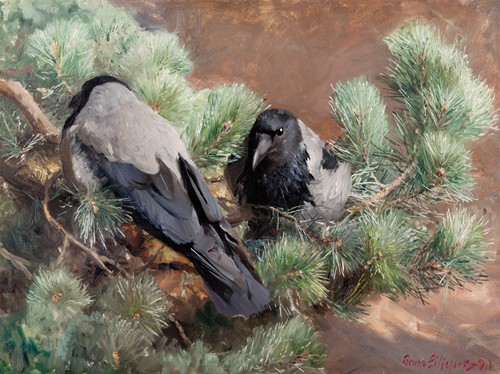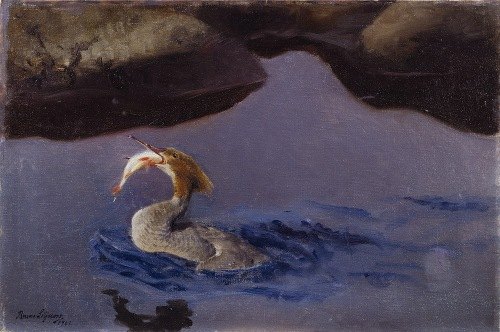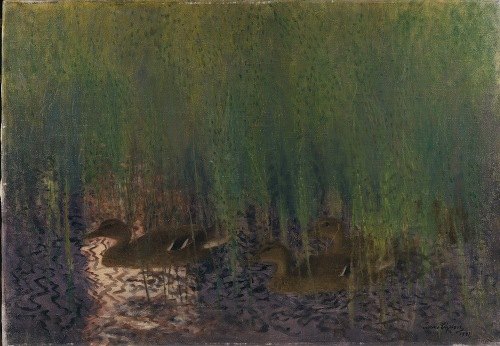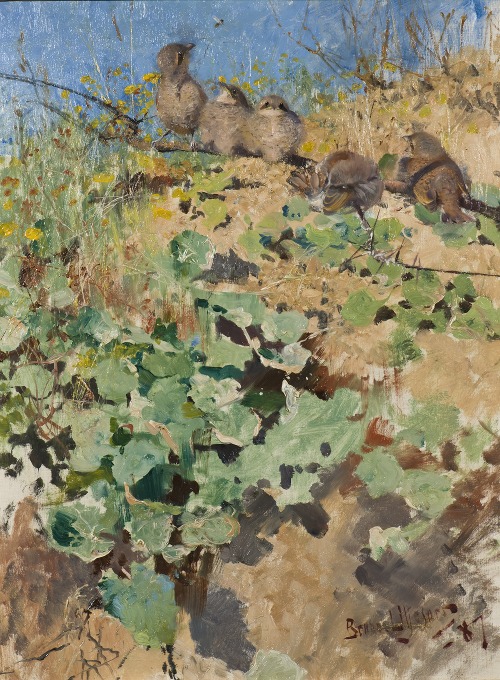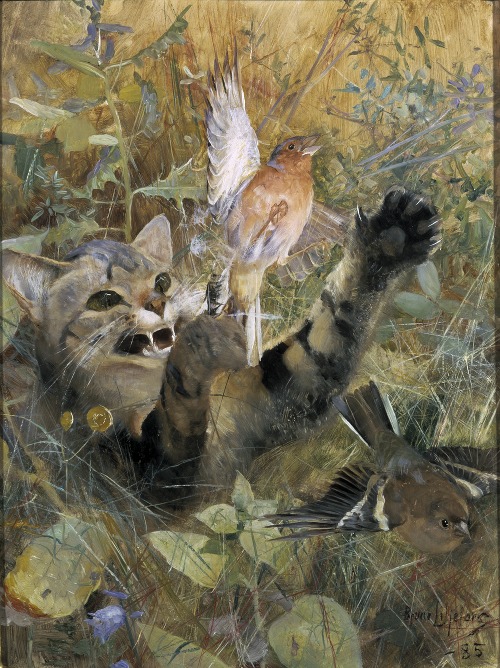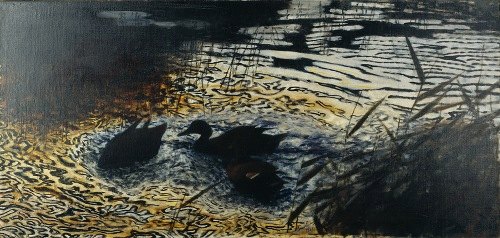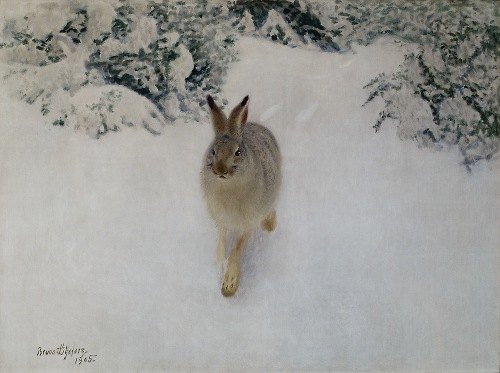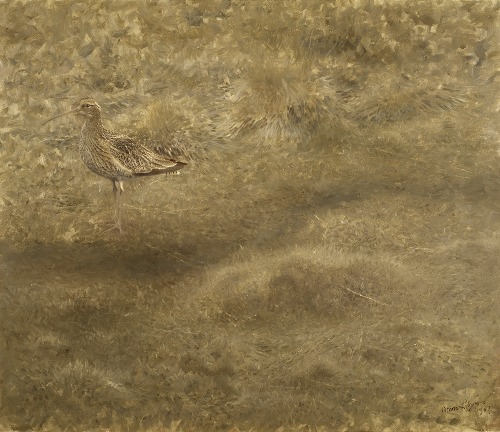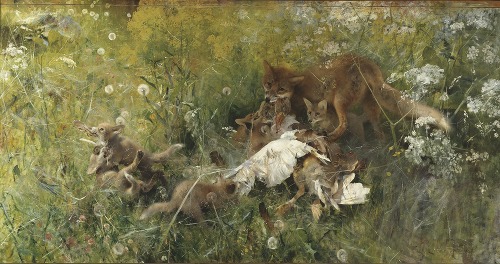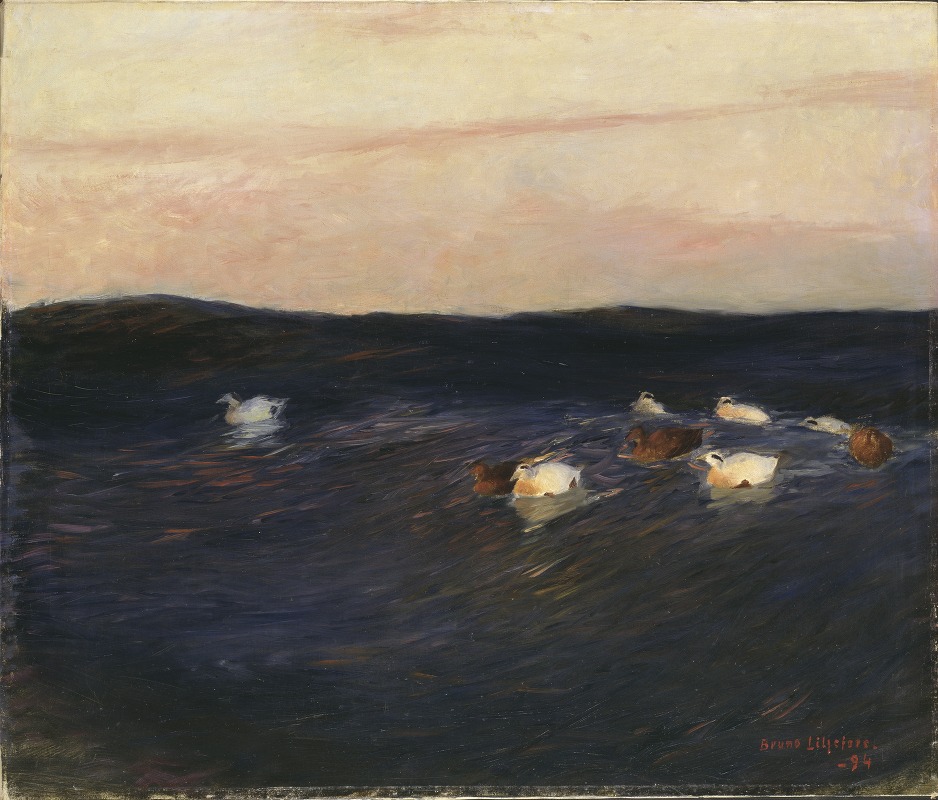
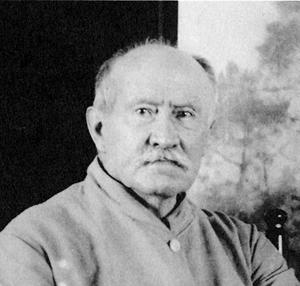
Bruno Andreas was a Swedish artist. He is perhaps best known for his nature and animal motifs, especially with dramatic situations. He was the most important and probably most influential Swedish wildlife painter of the late nineteenth and early twentieth century. He also drew some sequential picture stories, making him one of the early Swedish comic creators.
Liljefors was born in Uppsala, Sweden. His parents were Anders Liljefors and Maria Margareta Lindbäck. He was brother of the composer and conductor Ruben Liljefors (1871–1936). He went to Uppsala Cathedral School for six years. He received instruction from 1879-82 at the Swedish Royal Academy of Fine Arts. From 1882-83, he made a study trip to Düsseldorf, Baiern, Venice, Florence, Naples, Rome and Paris. He received inspiration from the Scandinavian artist colony in Grez-sur-Loing. In 1886, he became a member of the Artists' Union (Konstnärsförbundet), which was in opposition to the Royal Academy. From 1888-89, he taught at Valand Academy in Gothenburg.
During the last years of the nineteenth century, a brooding element entered his work, perhaps the result of turmoil in his private life. He was often short of money and in 1925, he suffered a facial neuralgia with severe pain. From 1932, Liljefors lived at Kungsholmen in Stockholm. The last two years of his life he spent in Uppsala. Liljefors died during 1939 and was buried at the Uppsala old cemetery.
Liljefors is held in high esteem by painters of wildlife and is acknowledged as an influence by, for example, American wildlife artist Michael Coleman. All his life Liljefors was a hunter, and he often painted predator-prey action, the hunts engaged between fox and hare, sea eagle and eider, and goshawk and black grouse serving as prime examples. However, he never exaggerated the ferocity of the predator or the pathos of the prey, and his pictures are devoid of sentimentality.
The darker quality in his paintings gradually began to attract interest, and he had paintings exhibited at the Paris Salon. The influence of the Impressionists can be seen in his attention to the effects of environment and light, and later that of Art Nouveau in his Mallards, Evening of 1901, in which the pattern of the low sunlight on the water looks like leopardskin, hence the Swedish nickname Panterfällen. Bruno was fascinated by the patterns to be found in nature, and he often made art out of the camouflage patterns of animals and birds. He particularly loved painting capercaillies against woodland, and his most successful painting of this subject is the large-scale Capercaillie Lek, 1888, in which he captures the atmosphere of the forest at dawn. He was also influenced by Japanese art, for example in his Goldfinches, painted in the late 1880s.
